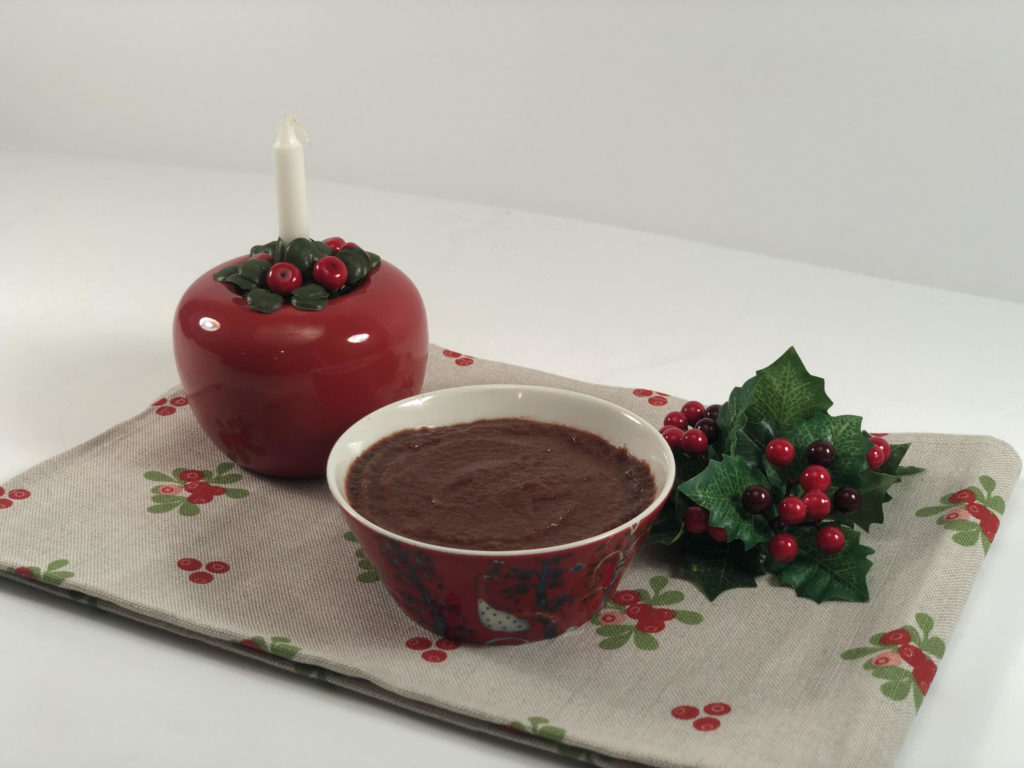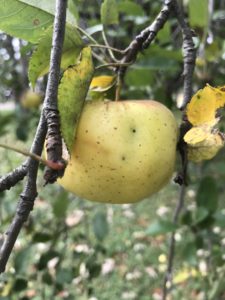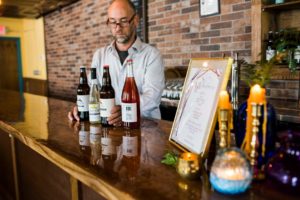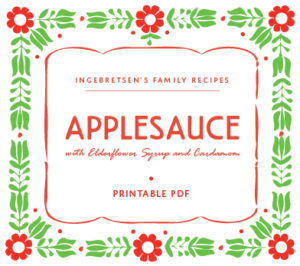
The apple, a plump and tasty member of the rose family, began its journey west as a small, unprepossessing, and bitter orb. After a few centuries, it rose to its current status of being one of the world’s most important fruits. Like many success stories, it had humble, rural origins – the mountains of the Kazakhstan to be exact. Growing wild and free, the Greeks of antiquity spotted the trees and saw their potential. Apples went under the knife through propagation by cuttings, grafts, and careful plant husbandry as the Greeks fashioned apples into a fruit worthy of mention in Apicius, one of the world’s oldest collection of recipes, gathered in the fourth century. But it was 800 A.D. that was the apple’s break-out year.
Charlemagne had finished uniting Europe and was ready to for some time in the garden. He gave apples a starring role in his royal estates, which spread from Germany to Spain, and told his estate managers to plant four different varieties of apples. He requested Gozmaringa, Geroldinga, Crevedella, and Spirauca, surely fashionable names in their era. The varieties represented a balance of tart and sweet, early- and late-ripening. Royalty set fashion, and the fruits that were served to Charlemagne gained popularity throughout the continent.
When apples reached Scandinavia and Russia, they were adopted enthusiastically, and work began to develop apples that would ripen quickly in the short, Northern growing season. The fruit provided the slightly acidic touch that added depth to a diet that featured pork, cabbage, and kale. A few centuries later, European immigrants to North America brought apple seeds with them. In Minnesota, apples found the perfect environments and “they could grow like weeds,” says Jeff Zeitler of Urban Forage Winery and Cider House. And that is a very good thing for those of us who live here.
Selecting apples for applesauce
Jeff and his wife, Gita Rijal Zeitler, are the foragers, brewers, bartenders, and guiding lights of a winery and cider house that sources its fruits and even vegetables (yes, Virginia, there is a carrot wine…) locally. Almost all apples used are from city trees whose owners have given the Zeitler’s permission to harvest what would otherwise go to waste. The guidelines for gathering apples for a good cider are the same as for making a flavorful applesauce. Jeff has suggestions for how to find the best mix.
Using several varieties is best. The choices needn’t be the currently popular ones, either. “Older crab apples are flavorful and closer to the native trees,” Jeff says. “Look for the trees with golf-ball to ping-pong ball-sized apples.” Evereste and Chestnut crab apples are particularly good additions to sauce or cider. If you don’t know the variety you are harvesting, taste it. Even if the apple isn’t particularly good as an eating apple, you can utilize it in the overall flavor profile you are creating.
Jeff favors the older varieties of apples, such as Cortland and Haralson, for his ciders. These are good applesauce choices, too. “An apple doesn’t have to be perfect to be good,” he says. Jeff has been invited to orchards to harvest hail-damaged apples and to people’s yards to take less-than-attractive apples of unknown varieties and in irregular sizes. What counts is the flavor and when blended with other apples, what may have been less-than-exciting to sample becomes exactly what is needed. The same holds true when making applesauce.

Balance and contrast
Applesauce is a balance of sweet and acidic. This makes it the perfect complement to pork, a quality that was noted in Apicius. Vikings added apples to their porridges of smoked meats and whole grains boiled together, which was a staple meal. For a more contemporary take on the combination, Steve Dahl, co-owner of Ingebretsen’s and meat market manager, says, “Try applesauce with country-style ribs. Of course, it always goes well with a pork roast or chops.” (If you are close to the store, pop by and try the country-style ribs we offer. The butchers have done all the hard work, so all you have to do is bake them according to the directions they give you.)

As for a drink to complement the meal, Jeff recommends Urban Forage’s Gin Botanical cider. It’s a savory cider, which will offset the sweetness of the pork and applesauce. “It has juniper berries, black pepper, and coriander,” he says. While you can buy a bottle of the Gin Botanical and take it home to your richly flavored meal, be sure to visit our East Lake Street neighbor and spend some time at the bar.
Gita says that her favorite part of bartending is “making people happy.” That joyful energy may be why Urban Forage has become a popular place for blind dates, a phenomenon that Jeff and Gita enjoy watching. “We will see people meet, watch the dynamics, and see relationships develop. We’ve had couples come in and say that they had their first date here a year ago and they’ve returned to celebrate their anniversary.” Whether you are there on a date or not, it’s an opportunity to enjoy the local harvest – a phrase rarely applied to city settings – and savor the taste of a fruit that is so ubiquitous we often forget the subtlety and nuance it is capable of delivering.

Take your time
The applesauce recipe below gives you initial amounts to start your cooking. It is an opportunity to adjust, experiment, and perform a bit of alchemy in your own kitchen. The final amounts of elderflower syrup, brown sugar, and spice will depend on the mix of apples in your sauce and your own personal taste. Using a crockpot takes more time than a stove top, but slow cooking allows the apples to caramelize and to fully develop their flavors. This is the perfect recipe for a blustery day when you want to be inside, cozy in a home that smells delicious.
Applesauce with Elderflower Syrup and Cardamom
10 to 12 medium apples, peeled, cored, and chopped into chunks. Combine a variety of apples for the best results.
¼ cup orange juice
¼ cup elderflower syrup (saft)
½ cup brown sugar
1 teaspoon ground cardamom or ½ teaspoon l.c. finn’s cardamom extract
Put the chopped apples into a 5-quart slow cooker. Place on low heat. Add the orange juice and elderflower syrup. Cover the pot.
After 2 to 3 hours, begin to press the apples down and mash them with the back of a spoon or a potato masher. Add the brown sugar and the cardamom. Continue to let the apples cook.
Stir the apples hourly and adjust seasonings if you’d like. The flavors intensify after the sauce has cooled and rested for 24 hours. Add more liquid if necessary.
After 5 to 6 hours, you will have apple sauce. If you would like to make apple butter, remove the lid from the slow cooker and continue to cook the apples, stirring frequently. Once they have reached the desired consistency, turn off the slow cooker and put the apple sauce or butter into a container.
Makes approximately 1 quart.
Apple sauce and apple butter freeze very well. Put in a freezer container, allowing 1” head space for expansion. It will keep for a year.

